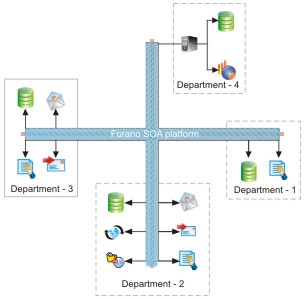
Home > Resources > Case Study > County of Tulare
Tulare County Integrates Electronic Court Systems with Fiorano SOA Platform
With a population of 464,000, Tulare County, California is one of the largest counties in the San Joaquin Valley. The Tulare County Justice Department consists of several county departments involved in the justice process such as Superior Court, DA, Probation, Public Defender, Sheriff and Agricultural Crimes.
Tulare County Integrates Electronic Court Systems with Fiorano SOA Platform
With a population of 464,000, Tulare County, California is one of the largest counties in the San Joaquin Valley. The Tulare County Justice Department consists of several county departments involved in the justice process such as Superior Court, DA, Probation, Public Defender, Sheriff and Agricultural Crimes.








